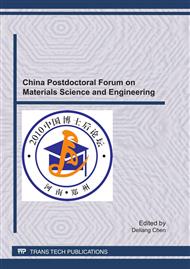p.80
p.84
p.89
p.93
p.98
p.102
p.106
p.110
p.114
Sulfation of Calcined Raw Meal in the Kiln Inlet Housing for the Cement Industry
Abstract:
The sulfation behavior of calcined raw meal was investigated in a laboratory fix-bed reactor under conditions typically for SO2 capture in the kiln inlet housing used in cement production. The initial period is characterized with a fast-increasing conversion, while the second period shows a slow-increasing conversion. A desirable temperature exists for sulfation of calcined raw meal. A smaller particle size favors the sulfation reaction. The initial conversion rate is significantly promoted by a higher SO2 concentration. The SEM examinations show that the sulfation process involves nucleation and growth of CaSO4 grains- the sulfation product. Increasing the temperature and extending the time result in fewer but larger CaSO4 grains in the product layer.
Info:
Periodical:
Pages:
98-101
Citation:
Online since:
June 2011
Authors:
Keywords:
Price:
Сopyright:
© 2011 Trans Tech Publications Ltd. All Rights Reserved
Share:
Citation:


